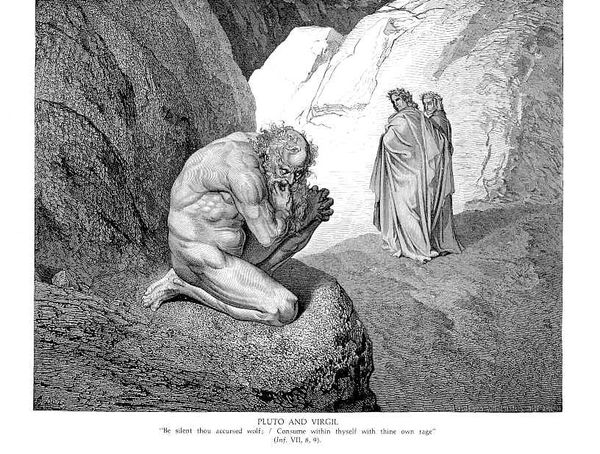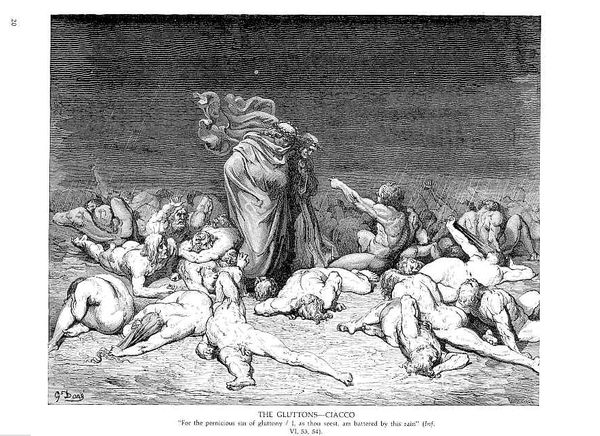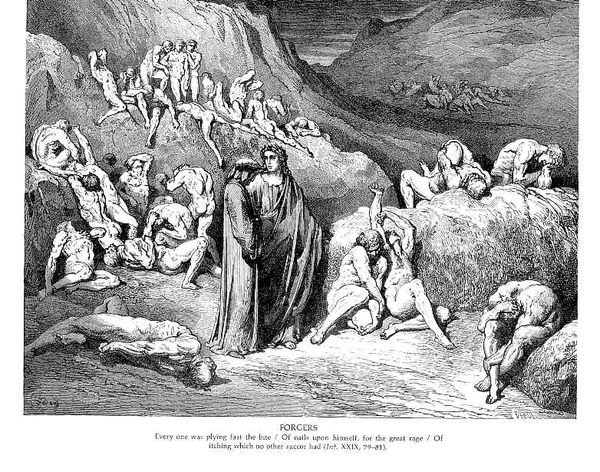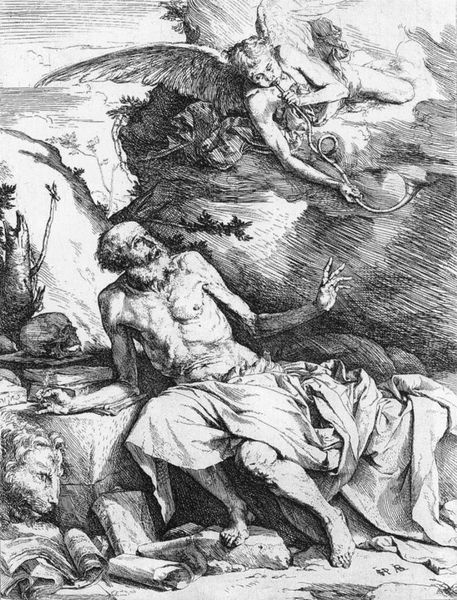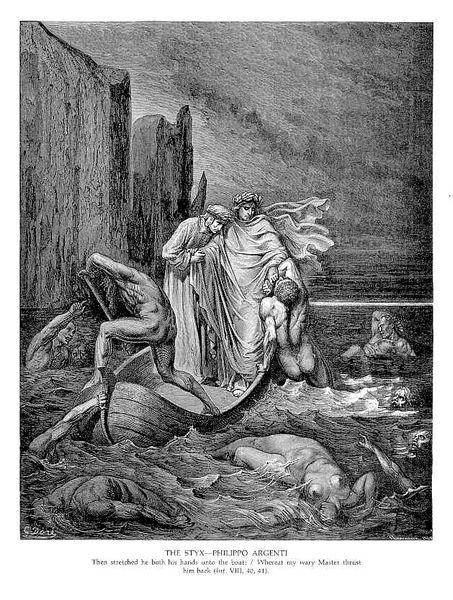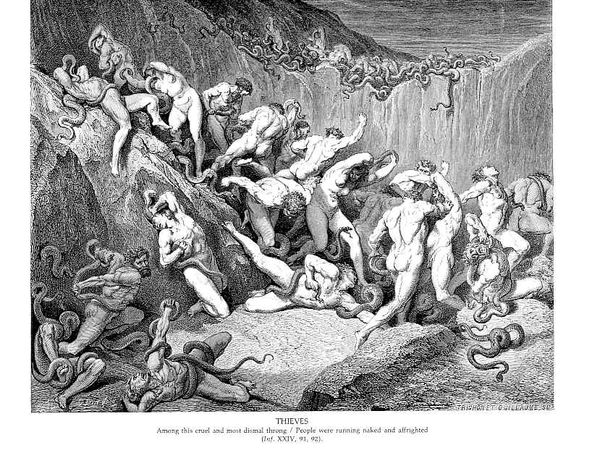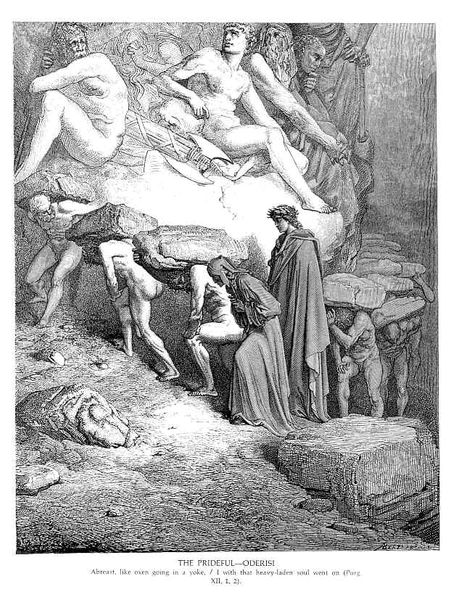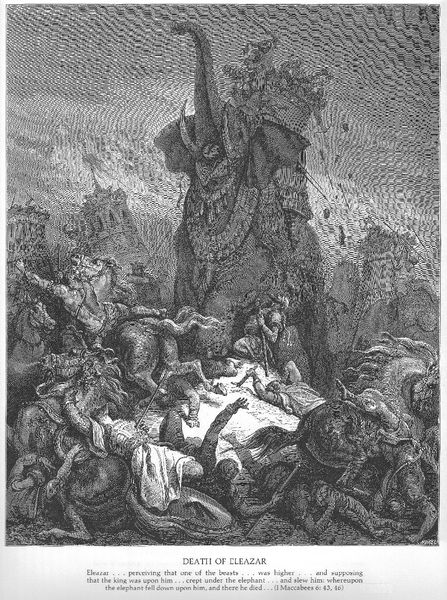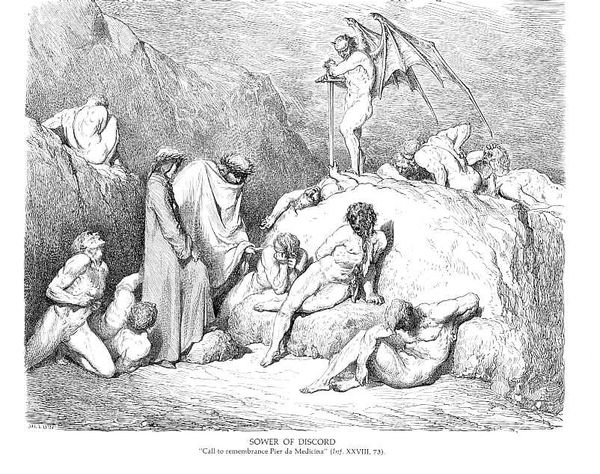
drawing, engraving, frottage
#
drawing
#
medieval
#
narrative-art
#
figuration
#
romanticism
#
line
#
history-painting
#
engraving
#
frottage
Copyright: Public domain
Editor: Here we have Gustave Doré's "Ephialtes," a drawing and engraving. The use of line is remarkable; it feels very graphic, almost harsh, which gives the work a heavy, melancholic mood. What visual aspects stand out to you in this piece? Curator: The composition is immediately striking. Notice the distinct zones of light and shadow created through crosshatching, a common engraving technique. This sharp contrast delineates the musculature of Ephialtes, emphasizing his physical power while simultaneously conveying his subjugation through the precise rendering of the chains. How does this interplay of light and form communicate the narrative's central conflict? Editor: It's like the light highlights his power, but the sharp lines defining the chains negate it, showing his imprisonment. I see that there are more chained figures too, not just the large one in front. What do you make of the lone figure at the base of the mountain? Curator: The small figure at the base introduces a fascinating scalar contrast. Its relative size, coupled with the deliberate positioning on the precipice, creates a spatial and metaphorical chasm. This compositional device is vital; the human figure is not physically restrained by chains, as are the others, suggesting that this one perhaps possesses free will, thought, or morality that the chained giants lack. Also, I wonder, how might we explore the textures presented in Doré's "Ephialtes"? The rough stone and fluid water appear to stand in contrast to the chained and bound giants. Editor: I hadn't thought about that contrast, with textures enhancing the formal reading, that is interesting. I noticed the use of 'frottage' in the details, and will be exploring that more. Thanks for highlighting the formal and structural qualities. Curator: A pleasure. Thinking critically about formal techniques and composition allows us a much richer understanding.
Comments
No comments
Be the first to comment and join the conversation on the ultimate creative platform.

